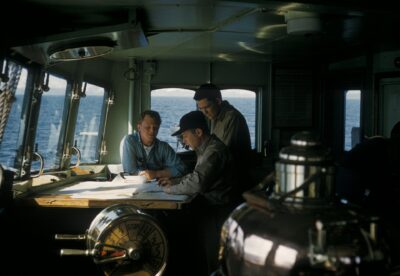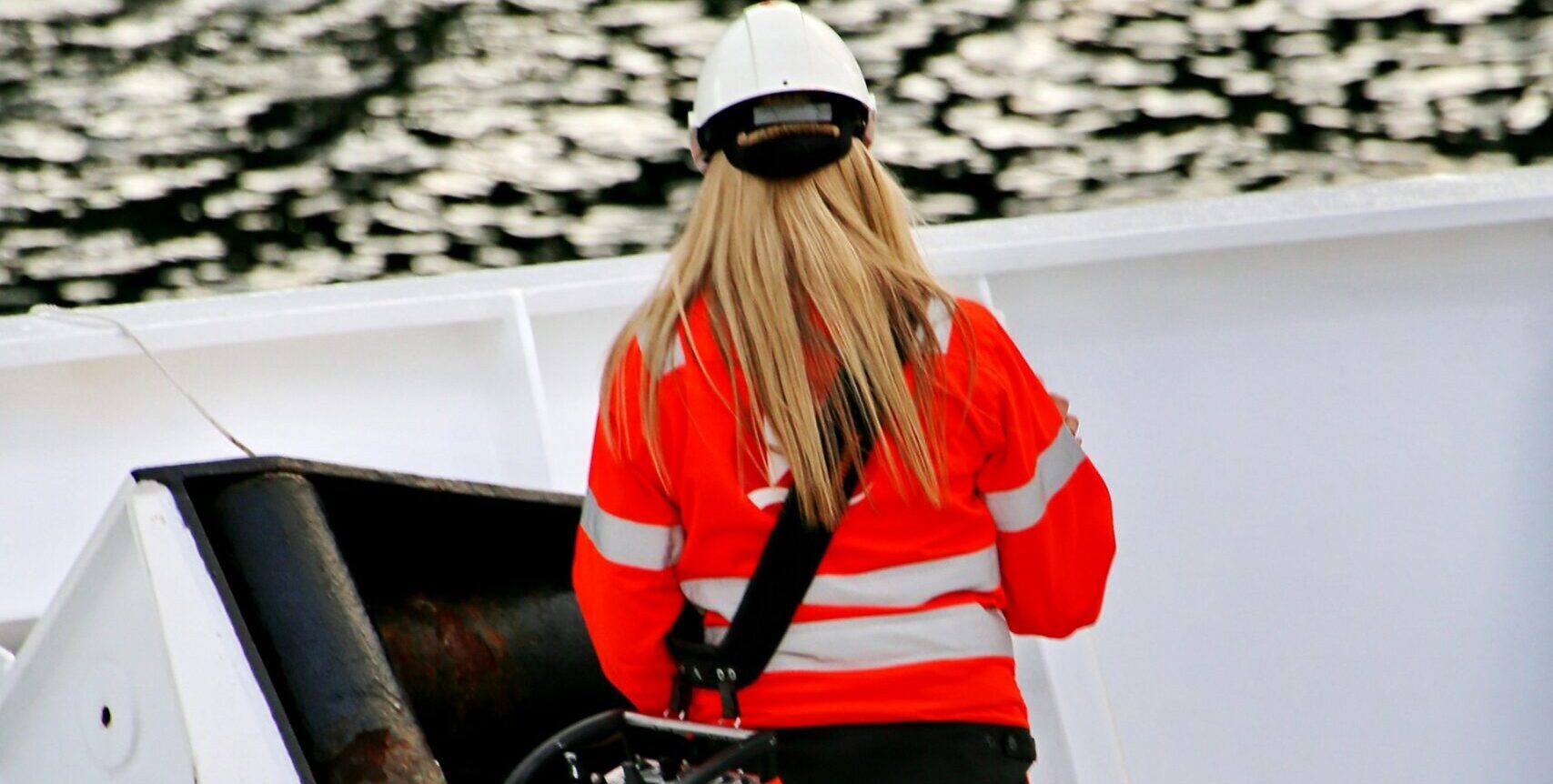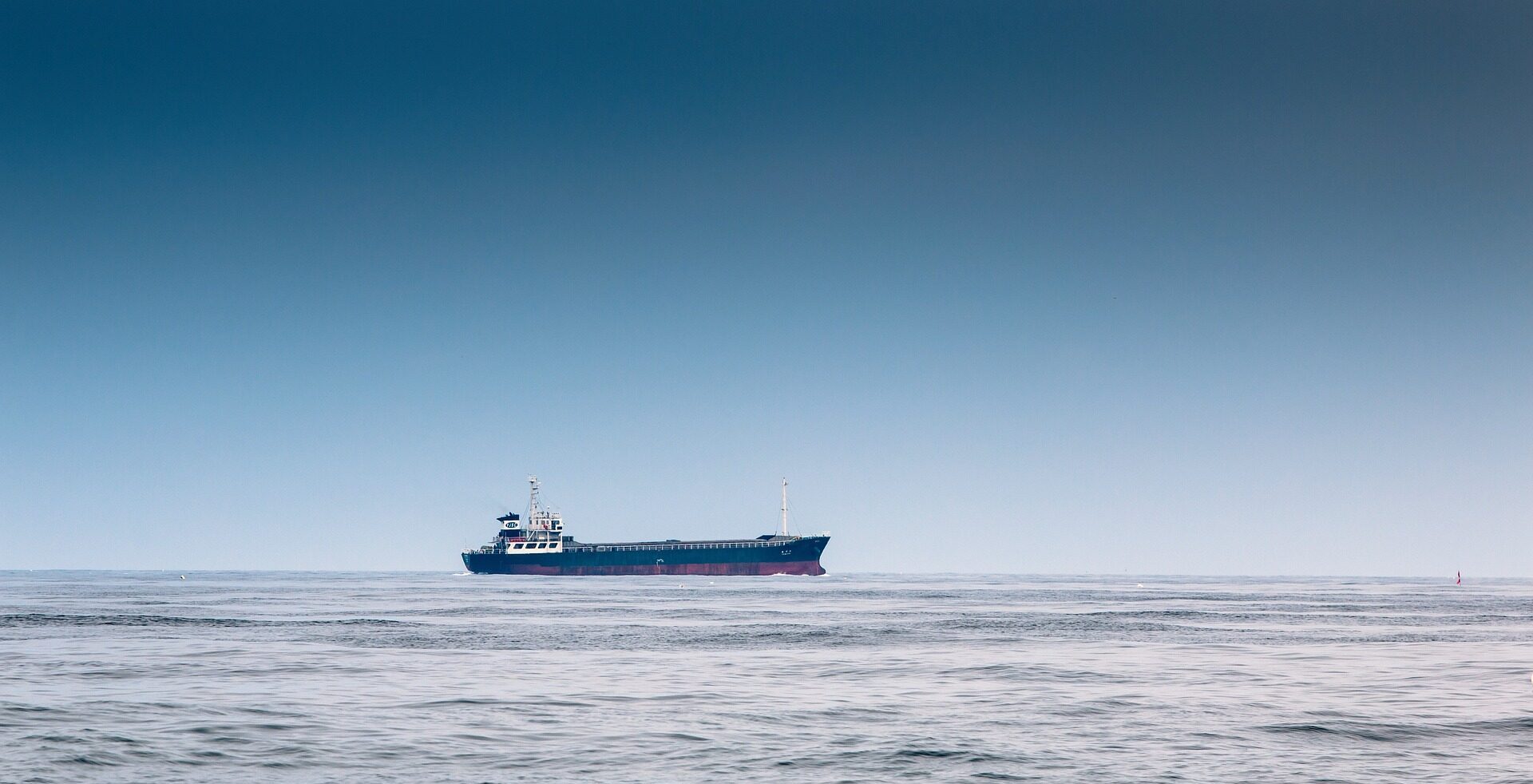Note: Regulations are current as of November 2025. Always check official sources for the latest updates.
Overview:
- Crews in tight quarters face higher risks of misconduct and safety incidents.
- The Safer Seas Act requires audio/video monitoring in stateroom passageways.
- MTSA/ISPS mandates continuous security monitoring of restricted areas.
- Compliance depends on proper system placement, retention, and training.
- Strong maritime surveillance boosts safety, accountability, and regulatory readiness.
Life at sea is demanding, and when crews share close quarters for weeks or months, issues can escalate quickly without the right safeguards. Misconduct, safety concerns, and misunderstandings can intensify, creating real challenges for security, accountability, and the prevention of sexual harassment.
To address these risks, the U.S. Coast Guard requires specific forms of surveillance and monitoring aboard vessels and at port facilities. A single incident can lead to costly investigations, compliance violations, or lasting reputational damage. The stakes are high for both your crew and your company.
Atekro helps maritime operators meet maritime surveillance and monitoring requirements with systems that are dependable, compliant, and built around respect for the people who rely on them. Our approach makes it easier to stay aligned with the Safer Seas Act and MTSA/ISPS regulations, while supporting safer, more transparent onboard environments. In this blog, we break down the purpose of maritime surveillance, the regulatory frameworks involved, common misconceptions, and the practical steps operators can take to achieve and maintain full compliance.
The Purpose of Monitoring
Safeguarding Crew Welfare

Life aboard a vessel is close-knit by nature. When crews share limited space for weeks or months at a time, conflict or misconduct can escalate quickly without proper safeguards. Surveillance systems serve as a proactive tool to discourage sexual harassment, bullying, or other inappropriate behaviors, especially in semi-private areas such as passageways outside staterooms. Studies reveal that over 66% of women seafarers have faced sexual harassment during their careers, underscoring the urgent need for stronger protections at sea.
Cameras and audio monitoring add an objective layer of accountability. When concerns arise, recordings help establish what actually happened, supporting those who report misconduct while also protecting individuals from false accusations. This balance preserves dignity, fairness, and the confidence of everyone on board.
A growing body of case law and incident reporting shows that transparent monitoring reduces disputes, speeds up investigations, and helps create a more respectful culture. Increasingly, crews recognize that surveillance isn’t about intrusion—it’s about ensuring their safety and well-being.
Meeting Security Obligations
Surveillance also plays a central role in maritime security. Since the creation of the Maritime Transportation Security Act (MTSA) and the International Ship and Port Facility Security (ISPS) Code in the early 2000s, operators have been required to continuously monitor restricted areas, access points, and perimeters.
Developed in response to heightened global security concerns following 9/11, these measures were created to ensure vessels and ports can detect, deter, and respond to unauthorized access or emerging threats. While watchstanders, guards, and lighting remain valuable, modern surveillance, especially CCTV and intrusion detection systems, provides continuous, reliable coverage. Cameras don’t fatigue, and their recordings create clear, reviewable evidence.
In a world facing cyber risks, smuggling activity, and evolving piracy tactics, strong monitoring systems support compliance, operational continuity, and global trust.
Establishing Reliable Evidence
When incidents occur at sea, whether accidents, misconduct, or other disputes, discovering the facts can be challenging. Vessels operate far from shore, and outside investigators are not always immediately accessible. In these cases, video and audio recordings become essential.
Surveillance provides impartial evidence that clarifies timelines, identifies responsible parties, and helps determine what actually took place. This reduces disputes, limits legal exposure for operators, and ensures victims of misconduct are treated with seriousness and respect.
For injury claims, recordings can verify whether safety procedures were followed. In criminal investigations, footage often becomes admissible evidence in U.S. or international courts. Reliable records matter not only for compliance but for ensuring fairness and accountability.
Two Frameworks Governing Surveillance
Surveillance requirements in maritime operations stem from two primary frameworks: the Safer Seas Act of 2022 and the MTSA/ISPS security regulations. Together, they address both crew welfare in living spaces and the security of operational areas.
Safer Seas Act (46 U.S.C. § 4901)
Enacted in 2022, the Safer Seas Act strengthens protections for seafarers by focusing specifically on preventing sexual harassment, abuse, and other misconduct in living spaces.
Applicability
The Act applies to documented non-passenger vessels with overnight accommodations for 10 or more people on certain long voyages, and to documented vessels of 500 gross tons or more on international routes. Fishing vessels, fish processors, and fish tenders are exempt due to their distinct operational profiles.
Placement Requirements
The law requires monitoring of passageways into which stateroom doors open. Cameras and microphones must be positioned so every stateroom door remains continuously visible. This focused approach balances deterrence and privacy, avoiding intrusion into private staterooms while ensuring accountable coverage of transitional areas.
Technical Standards
The Act sets specific performance standards. Video resolution and frame rate must clearly identify individuals, and audio must capture normal conversation despite vessel noise. Systems must run continuously, though motion- or sound-triggered recording is acceptable if all activity is retained.
Retention of Records
Retention rules are strict: footage must be stored for at least one year for general recordings and at least five years for recordings tied to alleged incidents. This aligns with investigative timelines and legal requirements.
Additional Obligations
Crew must be notified of monitored spaces, recordings must be secured and accessible only to authorized personnel, and crews must receive guidance on evidence preservation and reporting obligations.
Compliance Timeline
Required systems must be installed no later than two years after the enactment of the Don Young Coast Guard Authorization Act of 2022 or during the next scheduled drydock, whichever is later. For most vessels, this means installation by December 23, 2024 or the next drydock afterward.
MTSA / ISPS Continuous Monitoring
The MTSA and ISPS Code focus on guarding against external threats and ensuring the security of vessels and port facilities.
Legal Basis
U.S. implementation is outlined in 33 CFR § 104.285 for vessel security and 33 CFR § 105.275 for facility security.
Monitoring Requirements
Operators must continuously monitor restricted areas, access points, and perimeters. Approved methods include security lighting, guards or watchstanders, intrusion detection systems, and CCTV systems.
Flexibility
Each Vessel Security Plan (VSP) or Facility Security Plan (FSP) outlines which measures will be used. Cameras aren’t mandatory everywhere, but many operators rely on them due to their reliability and ability to record activity.
System Maintenance
Monitoring systems must be routinely tested, inspected, and maintained. Operators must keep logs of inspections, corrective actions, and any downtime, ensuring systems function properly when needed most.
Clarifying Common Misunderstandings
A common misconception is that all common areas must be monitored. Under the Safer Seas Act, monitoring is limited to hallways and passageways leading to staterooms, not lounges, dining areas, or gyms, unless companies choose to add coverage.
Under MTSA/ISPS, continuous monitoring is required, but operators may use lighting, patrols, or cameras depending on what best fits their facility or vessel. Many forward-leaning operators opt to expand coverage voluntarily to enhance deterrence, improve visibility, and resolve issues proactively.
Compliance Roadmap for Companies

Achieving compliance is a structured, multi-step process:
Determine Applicability
Organizations first identify which vessels meet Safer Seas Act thresholds by reviewing vessel documentation and operations. They must also verify whether their vessels or facilities fall under MTSA/ISPS based on factors such as size, voyage type, and operational role.
Map Coverage Areas
Next, companies map all areas requiring surveillance. For Safer Seas compliance, this includes all passageways accessing staterooms. For MTSA/ISPS, this includes restricted spaces, access points, and perimeters.
Select Suitable Equipment
Companies should choose marine-rated cameras and microphones that meet regulatory standards for video and audio quality. Furthermore, organizations must provide secure storage solutions that allow for the retention of general recordings for at least one year and incident-related footage for up to five years, as required by law.
Establish Policies and Controls
Effective compliance also depends on robust policies and controls. Companies should post clear signage in all areas where surveillance occurs to notify crew and visitors. Access to recordings must be restricted to authorized personnel only, protecting privacy and sensitive information. Surveillance practices should be integrated into the company’s broader safety and security management systems to ensure consistency and accountability.
Train Personnel
Training ensures crews understand system use, evidence handling, and reporting expectations. Organizations must maintain detailed training logs and keep thorough records of inspections, maintenance, and corrective actions, critical for annual inspections, drydock periods, and Certificate of Inspection renewals.
This roadmap supports compliance and strengthens a culture of safety, responsibility, and transparency on board.
Best Practices Beyond Compliance
Forward-thinking companies often go further by adding cameras in recreational and dining areas and expanding monitoring to entry points and cargo spaces to deter theft or tampering. They also strengthen privacy and retention policies and regularly review system performance to ensure their surveillance remains effective and up to date.
Together, these measures enhance safety, elevate security and well-being, strengthen trust, and build greater operational resilience for crews, regulators, and partners.
Conclusion
Maritime surveillance is about protecting the people who keep your operations moving. The Safer Seas Act and MTSA/ISPS give organizations a clear framework, but real safety comes from combining the right technology with a culture built on accountability and respect.
When you invest in thoughtful monitoring systems and strong training, you give your crews the confidence that their environment is safe, fair, and supported. And you give regulators, partners, and clients the trust that your operations are secure.
If you’re ready to build a safer, more responsible future at sea, connect with us today. Together, we can create an environment where every crew member feels protected and every voyage moves forward with confidence.
Frequently Asked Questions
What surveillance does the Safer Seas Act require?
The Safer Seas Act mandates audio and video monitoring in passageways where stateroom doors open on certain commercial vessels. Every stateroom door must be continuously visible, with recordings stored for at least one year. and longer if linked to an incident.
Which vessels must comply with Safer Seas Act surveillance rules?
The Act applies to documented non-passenger vessels with overnight accommodations for 10 or more individuals, documented vessels 500 GT+ on international voyages, and certain long-duration or offshore voyages. Fishing vessels and tenders are exempt.
What does MTSA/ISPS require for continuous monitoring?
MTSA/ISPS regulations require operators to continuously monitor restricted areas, access points, and perimeters using methods such as CCTV, lighting, guards, patrols, or intrusion detection systems as defined in their Vessel or Facility Security Plan.
How long must surveillance footage be retained?
General recordings must be stored for at least one year. Footage associated with an allegation or incident should be preserved for at least five years to align with investigative timelines and regulatory expectations.
Do cameras need to cover all common areas on a vessel?
No. The Safer Seas Act only requires monitoring of hallways and passageways leading to staterooms. Additional coverage, such as lounges or dining areas, is optional but often used to improve visibility and deter misconduct.
What equipment standards are required for compliance?
Systems must capture clear video and intelligible audio despite typical vessel noise. They must operate continuously or reliably capture all activity, with secure storage and restricted access to recordings.
How can maritime companies ensure full compliance?
Compliance requires identifying applicable vessels, mapping coverage areas, selecting marine-rated equipment, posting proper signage, training personnel, maintaining logs, and regularly testing systems, ideally with support from an experienced maritime technology partner.
Love This Article? Share It!
With modern vessels relying on digital systems, cybersecurity is essential to protect navigation, communication, and crew safety from growing cyber threats.
Cloud computing empowers businesses with flexibility, scalability, and cost savings, transforming operations across industries. This guide explores its advantages over traditional IT infrastructure and how it drives efficiency.
Reliable internet is crucial for maritime operations. Learn how multiple connection types and automatic switching gateways can optimize performance and reduce costs.
With rising cyber threats, accounting firms must prioritize securing sensitive financial data. By implementing strong security measures, training staff, and staying updated on risks, firms can protect themselves and clients from attacks.
Hybrid work offers flexibility but also brings cybersecurity risks. Learn how to simplify access, detect threats, and implement strong security measures.
AI can help SMBs streamline operations, make data-driven decisions, and enhance customer experiences. However, it also introduces challenges like data privacy risks, security concerns, and integration issues that businesses need to manage carefully.
Learn how implementing SPF, DKIM, and DMARC protocols can protect your business from phishing, spoofing threats, and improve your email deliverability, ensuring your messages reach the right inbox every time.
Ransomware poses a major risk to businesses, causing costly downtime and damage to your reputation. Strengthen your defense and ensure continuity with proactive security and effective recovery strategies.
Starlink’s high-speed, low-latency internet is challenging VSAT’s dominance. This blog explores their differences and impact on maritime communication.
Choosing between MSPs and Break-Fix IT companies affects your business’s efficiency and growth. Our blog outlines the pros and cons to help you select the model that best aligns with your goals.
STAY IN THE LOOP
Subscribe to our free newsletter.












